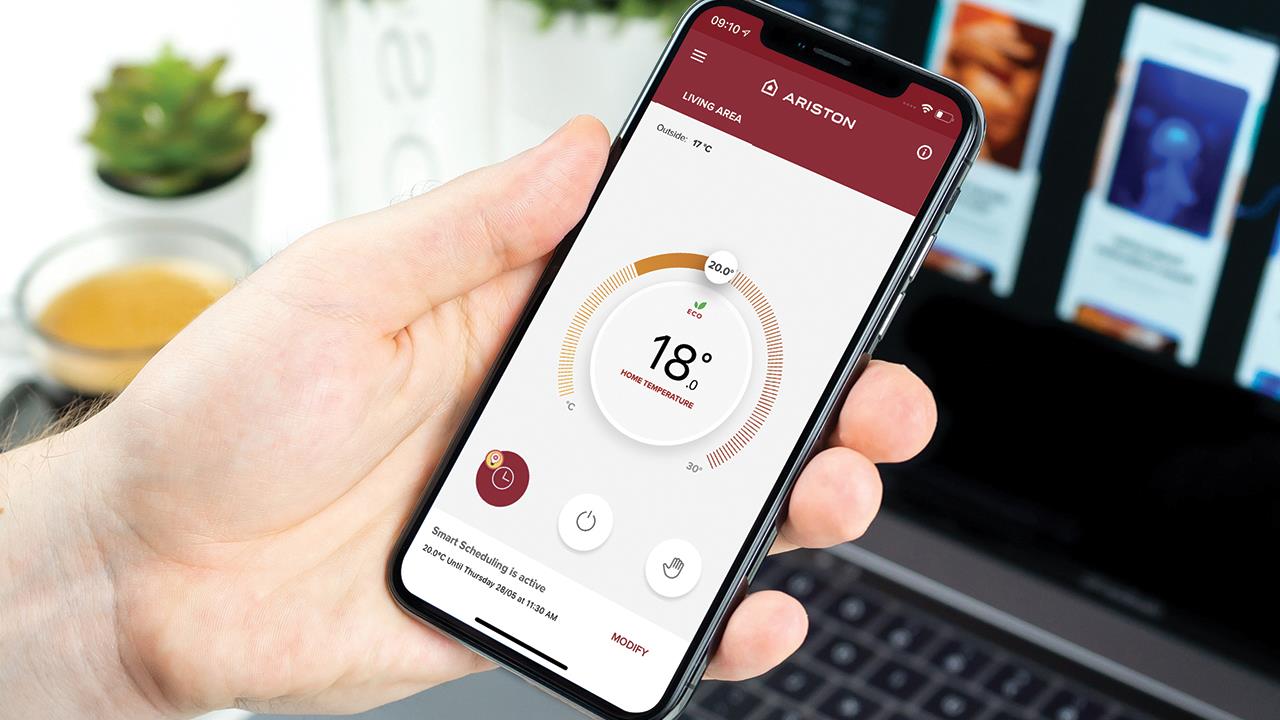

Those of you of a certain age may remember the BBC’s science and future programme Tomorrow’s World, which graced our TV screens between 1965 and 2003.
There was an episode in 1989 all about the home of the future. In it, a wonderfully titled ‘futurologist’ talked about what our homes would look like in 2020. She predicted that “technology itself will be embedded in the very fabric of the house… it will be there doing its job without getting in our way.”
So, this home of the future appears to have – in some sense at least – arrived. The last few years have seen an explosion in interest in smart homes and the Internet of Things (IoT).
The advent of smartphones and tablets certainly hastened the move towards the connected home. Smart fridges, voice-activated controls, and music that follows individuals around their properties, are just a few of the technological innovations already available.
The heating industry isn’t immune from this headlong march to the future, either. Indeed, it has been leading the way in putting control into the hands of the users for many years. Interconnected technology has created controls that are smart, appreciated by homeowners and, perhaps best of all (especially in the current climate of eye-watering energy price increases), are helping them to make their homes ever more efficient.
It is interesting to note, amid all this proliferation of technology, that the word ‘smart’ in this instance is actually an acronym for ‘Self-Monitoring, Analysis, and Reporting Technology’. Of course, it does mean ‘clever’ as well, but the acronym is actually quite helpful in explaining the thinking behind smart controls.
Their role is to monitor what is happening in a system, checking it against different criteria, and initiating appropriate responses – while keeping homeowners updated as to what is happening, and providing the information they need for decision making. There are tangible benefits – both for the homeowner and the installer.
If you take our smart controls Ariston NET and Aqua Ariston NET as examples, homeowners are able to manage their comfort from wherever they are – in the home or anywhere in the world – through the apps. They can schedule when the heating comes on, set temperatures, ensure there is plenty of hot water available for their shower, and access remote assistance to solve any problems that might occur.
Having that level of control in the home allows the end-user to save up to 25% energy, because they can access, in granular detail, information on how and when they are using their system the most, and can then programme it accordingly.
The connectivity of those systems means that this can be done with added ease by using voice-activated control systems, such as Apple’s Siri or Google Assistant. Installers benefit from remote access and monitoring – helping diagnose potential issues with a system before visiting a customer’s home.
Homeowners are increasingly asking for smart controls, but they are not always entirely sure of the best approach. And that is where installers and heating engineers can add value to their services by advising on which devices are going to work best with a specific system.
Installers are generally regarded as the experts when fitting a new heating system, so it pays to be up to date on the controls available and how they integrate with a particular boiler or water heater.
We would always recommend choosing controls that are from the same manufacturer as the heating system, because they will have been fully tested and will speak the same digital language. Using other controls with smart boilers may cause issues and unreliability. In addition, when homeowners are using the apps for remote assistance, there is seamless integration that makes their experience a much more pleasant one.
Of course, it is important installers familiarise themselves with how the apps work, in order to demonstrate full control of the product and empower the homeowner to manage their system. They will be grateful for the handover and feel much more comfortable with the new higher level of control and energy saving potential they have.
Not only will that little bit of customer care help to strengthen relationships with them, it will also build a level of trust that enhances an installer’s reputation, fosters repeat business, and generates word-of-mouth recommendations.
So, smart controls are definitely here to stay. They have now come to be expected and appreciated by homeowners, and allow heating engineers and installers to create new business opportunities, generate some extra profit on installations, and cement their ongoing relationships with their customers. After all, as Bill Gates said: “The advance of technology is based on making it fit in so that you don’t really even notice it… it’s part of everyday life.”
If you'd like to keep up-to-date with the latest developments in the heating and plumbing industry, why not subscribe to our weekly newsletters? Just click the button below and you can ensure all the latest industry news and new product information lands in your inbox every week.